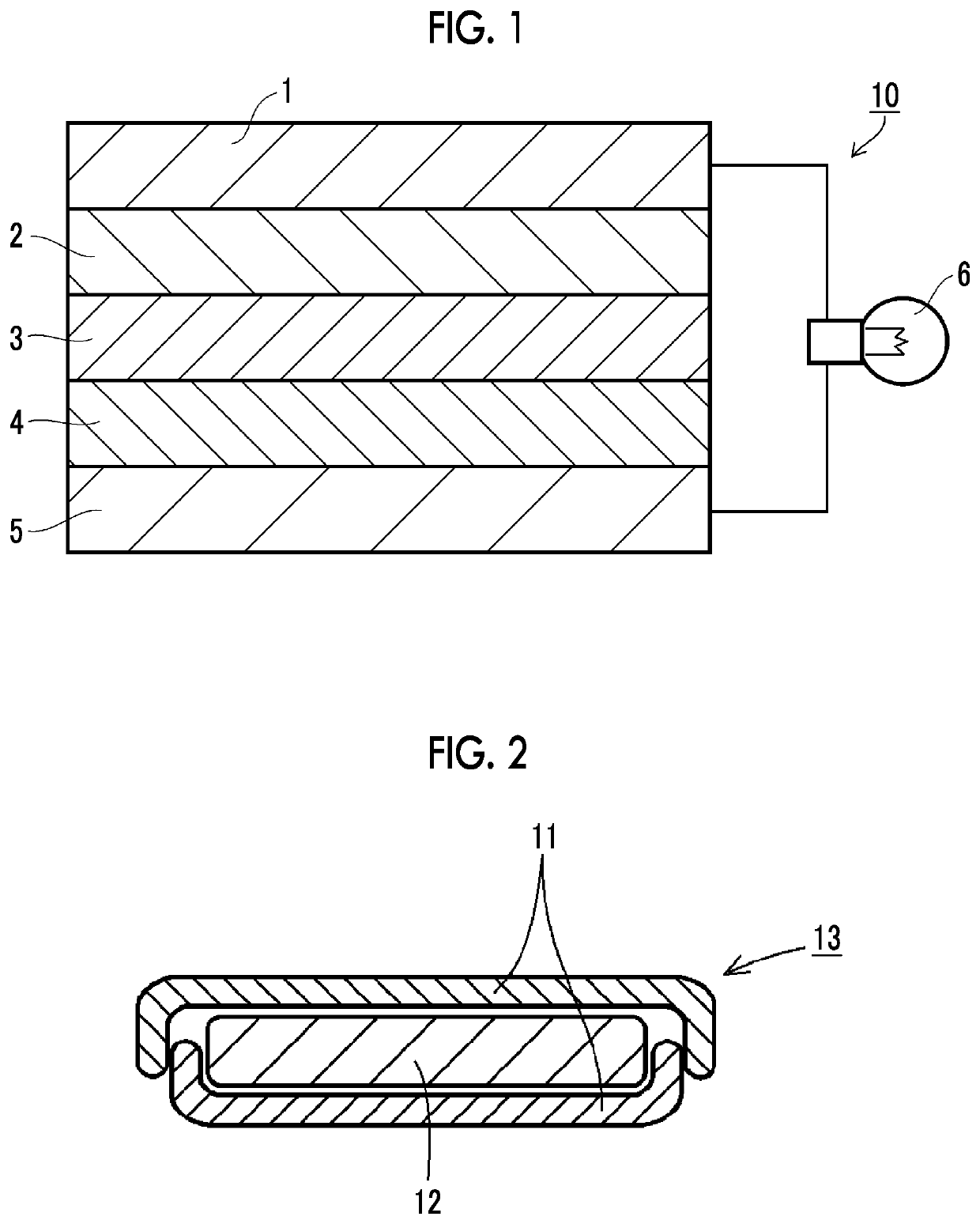Solid electrolyte composition, solid electrolyte-containing sheet, all-solid state secondary battery, and methods for manufacturing solid electrolyte-containing sheet and all-solid state secondary battery
- Summary
- Abstract
- Description
- Claims
- Application Information
AI Technical Summary
Benefits of technology
Problems solved by technology
Method used
Image
Examples
example 1
[0343]In Example 1, solid electrolyte-containing sheets were prepared, and, regarding these sheets, the binding property and the bending resistance were evaluated.
[0344]
[0345]—Preparation of Solid Electrolyte Composition S-1—
[0346]Fifty zirconia beads having a diameter of 3 mm were injected into a 45 mL zirconia container (manufactured by Fritsch Japan Co., Ltd.), an oxide-based inorganic solid electrolyte LLZ (manufactured by Toshima Manufacturing Co., Ltd.) (1.5 g) and a binder D-1 (0.02 g) were added thereto, and heptane (2.5 g) was injected thereinto as a non-aqueous dispersion medium. After that, the container was set in a planetary ball mill P-7 (trade name) manufactured by Fritsch Japan Co., Ltd., and the components were continuously mixed together for 2 hours at a temperature of 25° C. and a rotation speed of 300 rpm. Next, a non-aqueous solvent dispersion B-1 of acid-modified cellulose nanofibers (1.0 g) was added thereto and mixed at a rotation speed of 100 rpm for 10 minu...
example 2
[0379]In Example 2, positive electrode sheets for an all-solid state secondary battery were produced, and, regarding these sheets, the binding property and the bending resistance were evaluated.
[0380]
[0381]—Preparation of Composition for Positive Electrode P-1—
[0382]Fifty zirconia beads having a diameter of 3 mm were injected into a 45 mL zirconia container (manufactured by Fritsch Japan Co., Ltd.), and the solid electrolyte composition S-2 prepared in Example 1 (1.5 g) was added thereto. A positive electrode active material NCA (3.6 g) was added thereto, and then this container was set in a planetary ball mill P-7 (trade name, manufactured by Fritsch Japan Co., Ltd.), and the components were continuously stirred at a temperature of 25° C. and a rotation speed of 100 rpm for 10 minutes, thereby preparing a composition for a positive electrode P-1.
[0383](2) Preparation of Compositions for Positive Electrode P-2 to P-8, HP-1, and HP-2—
[0384]Compositions for a positive electrode P-2 to...
example 3
[0392]In Example 3, all-solid state secondary batteries were manufactured, and battery performance (the number of cycles for the occurrence of a short circuit and a decrease in battery voltage) was evaluated.
[0393]
[0394]The composition for a positive electrode P-1 prepared in Example 2 was applied onto the 30 μm-thick solid electrolyte-containing sheet SS-1 using an applicator having a clearance set to 300 μm and dried on a hot plate at 80° C. for 20 minutes (to remove the non-aqueous dispersion medium), thereby forming a positive electrode active material layer PS-1 (film thickness: 100 μm) on the solid electrolyte layer. Next, the peeling sheet of the solid electrolyte-containing sheet SS-1 was peeled off, and an exposed surface of the solid electrolyte layer and a Li metal foil (thickness: 50 μm) were brought into contact (laminated) with each other and pressed at 50 MPa. An electrode sheet for an all-solid state secondary battery Z-1 formed by laminating the positive electrode a...
PUM
 Login to View More
Login to View More Abstract
Description
Claims
Application Information
 Login to View More
Login to View More - R&D
- Intellectual Property
- Life Sciences
- Materials
- Tech Scout
- Unparalleled Data Quality
- Higher Quality Content
- 60% Fewer Hallucinations
Browse by: Latest US Patents, China's latest patents, Technical Efficacy Thesaurus, Application Domain, Technology Topic, Popular Technical Reports.
© 2025 PatSnap. All rights reserved.Legal|Privacy policy|Modern Slavery Act Transparency Statement|Sitemap|About US| Contact US: help@patsnap.com

